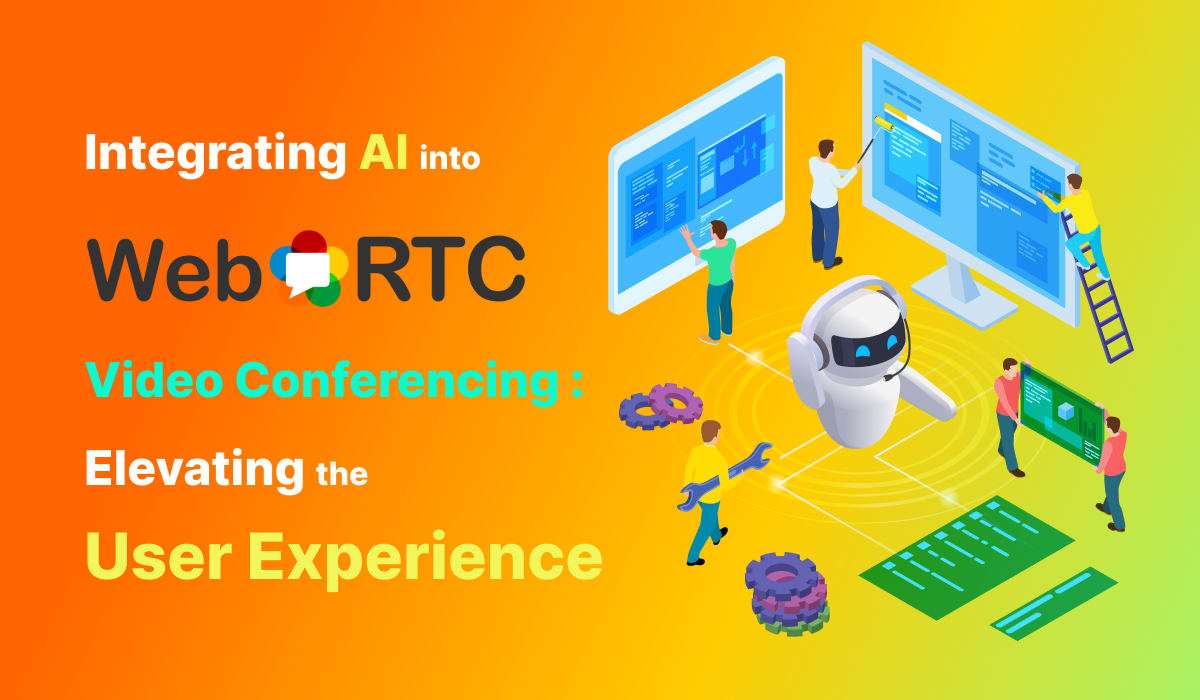Introduction
The landscape of communication technologies has undergone a significant transformation in recent years, with Web Real-Time Communication (WebRTC) emerging as a powerful tool for real-time video conferencing. As the demand for more sophisticated and user-centric communication tools grows, the role of Artificial Intelligence (AI) in enhancing WebRTC-based solutions has become increasingly prominent.
What is WebRTC?
Web Real-Time Communication, commonly known as WebRTC, is an open-source framework that enables real-time communication directly through web browsers. Its key features include:
- Peer-to-Peer Communication: Ensures low latency and high-quality transmission.
- Cross-Platform Compatibility: Works across different operating systems and browsers.
- Security Protocols (DTLS and SRTP): Encrypts data to ensure private and secure communication.
How AI Enhances WebRTC Video Conferencing
The integration of AI into WebRTC platforms has introduced a range of advanced features that significantly enhance the quality and effectiveness of virtual meetings.
- Enhanced Video Quality: AI algorithms dynamically adjust video settings based on network conditions.
- Noise Cancellation: AI effectively filters out unwanted background noise.
- Virtual Backgrounds and Effects: AI allows users to replace their physical background seamlessly.
- Real-Time Translation and Subtitles: AI breaks down language barriers with on-the-fly translation.
- Facial Recognition and Emotion Analysis: AI can be used for participant authentication and to gauge emotional states.
Challenges and Considerations
While powerful, the integration of AI with WebRTC presents challenges that must be addressed for successful implementation.
- Technical Challenges: Managing latency, processing power demands, and ensuring data privacy are significant hurdles.
- Ethical Considerations: Transparency, user consent, and potential bias in AI algorithms are critical ethical concerns that need careful management to maintain user trust.
Solutions and Strategies
To overcome these challenges, developers can adopt several strategies:
- Edge Computing: Reduces latency by processing data closer to the user.
- Optimized AI Algorithms: Use lightweight models to manage processing power.
- Robust Data Privacy Measures: Implement end-to-end encryption and comply with privacy regulations.
- Ethical AI Development: Use diverse datasets and continuously test for bias.
Conclusion
The integration of AI with WebRTC is transforming user experiences and driving innovation across industries. As these technologies continue to evolve, their synergy will redefine communication standards, providing businesses with powerful tools to stay competitive.
Frequently Asked Questions
What is the main benefit of integrating AI with WebRTC?
The main benefit is the creation of more intelligent, responsive, and personalized communication experiences. AI enhances WebRTC with features like improved video quality, noise cancellation, real-time translation, and sentiment analysis.
How does AI improve video quality in WebRTC?
AI algorithms can dynamically adjust video parameters like resolution, frame rate, and bit rate in real-time based on network conditions, ensuring the best possible video quality without interruptions.
What are the privacy concerns with AI in video conferencing?
Privacy concerns include the handling of sensitive data from facial recognition, voiceprints, and personal conversations. It is crucial to use strong encryption, obtain user consent, and comply with data protection regulations like GDPR.
Leverage AI-Enhanced WebRTC Solutions
If you're looking to leverage the power of AI-enhanced WebRTC solutions, our team specializes in custom WebRTC and Jitsi solutions tailored to meet your business needs. Contact us today to discuss how we can support your business in adopting these cutting-edge technologies and stay ahead in the rapidly evolving digital landscape.
Contact Us